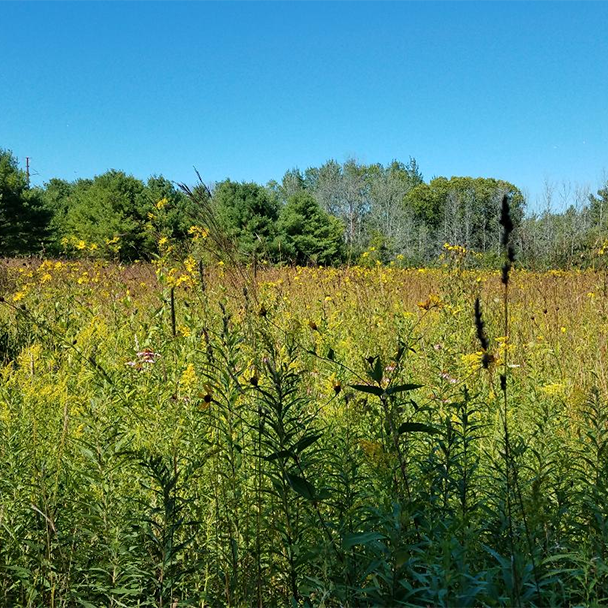By Coggin Heeringa
Interpretive Naturalist, Crossroads at Big Creek, Inc.
With August winding down and the sun setting a bit earlier each day, members of the Door Peninsula Astronomical Society are increasing their efforts in KEEPING THE DOOR DARK. Their monthly public viewing program in August will be a special “Dark Skies Viewing Night.” Clearly, amateur astronomers are dismayed by artificial night lighting. Those in the hospitality industry should be also; Door County’s beautiful dark and star-studded night sky is a major attraction for many of our visitors.
Perhaps surprisingly, Wild Ones of the Door Peninsula, an organization dedicated to promoting environmentally sound landscaping to preserve native biodiversity are strong advocates for Dark Skies, too. On Tuesday, August 30, at 6:30 pm, Wild Ones will offer a lecture at the Collins Learning Center titled, “Wildflowers Need Dark Skies.”
The Dark Sky Viewing Night of the Door Peninsula Astronomical Society will be on Saturday, August 27, starting at 7:00 PM. The indoor planetarium will host star shows until the real sky is dark enough for viewing (around 8:30). Dark Skies Advocate Tom Gwilym will be on hand to answer questions and DPAS members will guide participants through various tests for light pollution in addition to pointing out late summer constellations.
According to current dark sky ratings, the Crossroads Astronomy Campus is a Bortle 4, while Newport State Park is a 2, and downtown Sturgeon Bay is a 5. At the DPAS program, participants will learn what this means and what we all can do to improve our ratings … and help Newport State Park retain its Dark Sky Park designation. There will be stickers for the kids and educational fun for the whole family. The activities take place at the Astronomy Campus, 2200 Utah Street, Sturgeon Bay.
According to the International Dark Skies Association, “For billions of years, all life has relied on Earth’s predictable rhythm of day and night. It’s encoded in the DNA of all plants and animals. Humans have radically disrupted this cycle by lighting up the night.
“Plants and animals depend on Earth’s daily cycle of light and dark rhythm to govern life-sustaining behaviors such as reproduction, nourishment, sleep and protection from predators. Scientific evidence suggests that artificial light at night has negative and deadly effects on many creatures, including amphibians, birds, mammals, insects and plants.”
According to research scientist Christopher Kyba, for nocturnal animals, “the introduction of artificial light probably represents the most drastic change human beings have made to their environment.”
But how on Earth could dark skies benefit plants? A couple ways are obvious. Trees near artificial outdoor lighting tend to leaf out and bloom earlier in spring, making them susceptible to late frost events. And plants that are pollinated by night-flying moths will be less productive.
But most of our pollinators – wild bees, honeybees, butterflies, hummingbirds – are active during daylight, so how could light pollution be an issue? Yet, it is.
Researchers, both in Europe and the United States, have documented that seed production is significantly reduced where light pollution – yes, it is pollution – occurs. And that was puzzling. How does artificial light at night change the behavior of pollinating insects during the day?
Perhaps insect behavior – guided by instinct – is not what changes. What if artificial light is changing the behavior of plants? Botanists have known for centuries that the ratio of daylight to darkness determines the germination and blooming times of flowers. Is it possible that plants, like animals, also have circadian rhythms? And it so, could a change in the hours of light interfere with pollination? Plant behaviors indeed are influenced by photoperiod.
For example, suppose a plant has a flower that normally blooms during the morning and closes in the afternoon. If it started blooming three or four hours earlier because of exposure to artificial light, its flower might already be closed before the day has warmed up enough for pollinating insects to fly. Not only would the plant not be pollinated, but the insects would not be able to collect the pollen and nectar they require.
Apparently, though I am not sensitive enough to notice, many flowering plants are programmed to exude a special attracting scent when bees are most active. If the light-influenced timing for scent release came too early in the day, these flowers might not be pollinated, and by extension, the insects would not find the food they need to survive.
The International Dark Sky Association quotes Chad Moore, formerly of the National Park Service, who wrote, “When we add light to the environment, that has the potential to disrupt habitat, just like running a bulldozer over the landscape can.” For pollinators, plants, and wildlife – for all of us – we should make an effort to keep the night skies over the Door Peninsula dark.
While dark skies are important to stargazers and native gardeners, there is perhaps a more urgent reason for dark skies. Energy! Global climate change! Reductions in outdoor artificial lighting save enormous amounts of energy. And everyone can help. At home, people can turn off all their lights when they turn in, or better yet, put their outdoor lights on timers. Even better still where safety is concerned, they can put outdoor lights on motion sensors.
Folks can learn more at Crossroads this week. Or just unwind. Our trails are open all day, every day, but on Friday, August 26, Crossroads Program Director invites the community to an “Evening at Crossroads — Unwind in the Woods,” a time to join others in relaxing, followed by s’mores fellowship at the Council Ring.



 ALL CONTENT © 2024 BY DOOR GUIDE PUBLISHING
ALL CONTENT © 2024 BY DOOR GUIDE PUBLISHING




